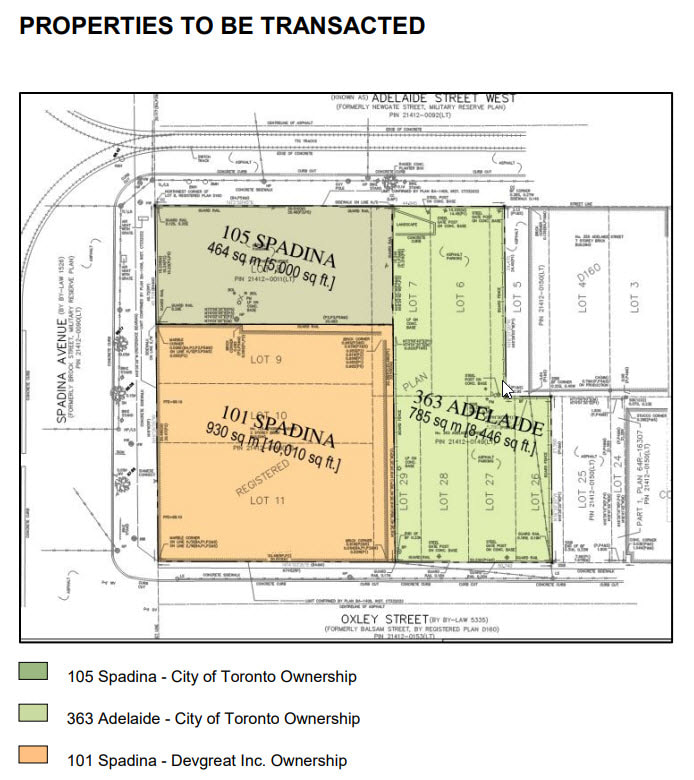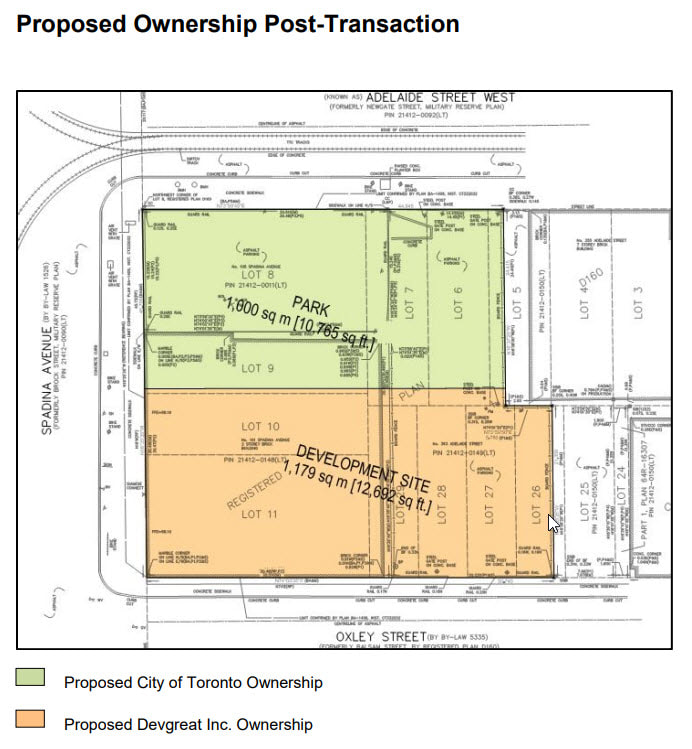|
Remember this THIS PROPOSAL involving two City-owned properties at 105 Spadina Avenue and 363 Adelaide Street West, and the privately owned property at 101 Spadina Avenue? The City-building benefits of this transaction are to create a new 1,000 m2 public park, to significantly increase public parking on this site and to generate additional funds to be used for affordable housing. A successful transaction would look like this: This was in July 2020 ... so I asked Anthony MacMahon about the status of this proposal. This is his encouraging response:
0 Comments
New initialisms have crept into our development vocabulary. Major Transit Station Areas (MTSAs) and Protected Major Transit Station Areas PMTSAs) are the subject of a Public Meeting to be held by the Planning and Housing Committee on January 12, 2022 at 10:30am The Province of Ontario needs the City to review our Official Plan by summer 2022. This update will help us prepare for long-term growth over the next 30 years. Toronto is expected to grow by 700,000 people and more than 450,000 jobs by 2051. Now to the business of planning how to accommodate that growth. One approach is to place growth within walking distance of rapid transit stations. It means compact, walkable areas with a diverse mix of uses and incomes, at densities that support transit ridership. This allows people to access public transit quickly and conveniently from the places they live, work, learn, shop, and play. Toronto has more than 180 potential Major Transit Station Areas (MTSAs) which could be designated for transit-oriented development. These are areas within an approximate 10-minute walk (500–800 metre radius) of a transit station (existing or planned). What are these 180 potential MTSAs? Here is the LIST. What data are associated with each of the MTSAs? You might be curious to scroll through this DOCUMENT and see what metrics are assigned to each of these downtown MTSAs on TTCs subway line one.
For example:
|


